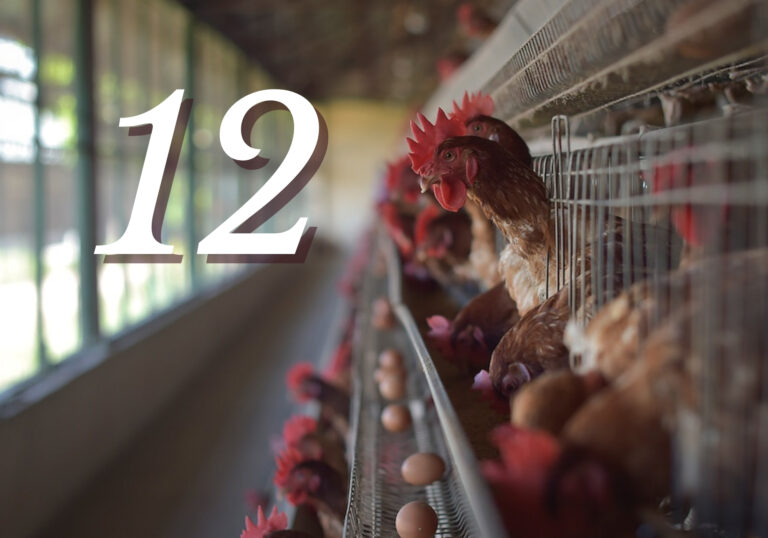Bird Flu
Viruses are everywhere. In our gut, our nose, our skin, our pets, livestock, soil, the air. Only a few hundred have been categorized as potentially harming people.
There are a great many viruses in the “Influenza” category. Some only affect humans, some only birds, some only animals, and some can make multiple species ill. Nearly every winter, new influenza viruses strike. And roughly one in ten people catch “the flu” each year.
Yearly, between 2,000 Americans (based on their death certificate diagnoses) or as many as 50,000 (based on CDC models) die from the flu. Most of those who die are elderly or very infirm. Some people die from other respiratory viruses that we call “colds.”
There are many influenza viruses known to affect birds: both wild birds and those grown for meat or eggs. The good news is that none of the truly lethal ones have ever been proven to spread between humans.
In 1997, the first identified cases of H5N1 bird flu in humans were identified, in Hong Kong. The humans had caught it from affected chickens. It killed a few people in addition to chickens, gaining a lot of attention.
This was at a time when the US military had become very interested in emerging infections as a potential military biowarfare threat. Plans were in place to roll out anthrax and smallpox vaccines for soldiers and develop additional vaccines for dozens of other infections that could be used for biowarfare. Bird flu was designated as another potential biowarfare threat.
By 2004, 32 humans throughout the world had been diagnosed with bird flu infections they caught from poultry (all in southeast Asia over a period of 7 years) and 20 of them had died. Compared to seasonal flu or to almost any other virus, that was a very small number of deaths. But Western governments decided bird flu was a huge threat, and started making a very big deal about it, searching for cases whenever a group of birds died.
Tests and vaccines were developed for H5N1 bird flu. Gain-of-function experiments were done to see if bird flu could be induced to transmit between humans. It turned out that YES, in the laboratory it could be induced to transmit between humans. But it didn’t spread between humans otherwise, outside the lab. Nonetheless, fearmongering about a potential bird flu pandemic accelerated.


In 2022, the first human case was discovered in America, in a prisoner whose job was culling chickens from flocks affected by bird flu. He was diagnosed on the basis of a positive test, yet his only symptom was 4 days of fatigue.
Surveillance for more cases was implemented, and chickens were closely scrutinized and frequently tested. The more aggressively cases were sought, the more were found, both in poultry and in humans.
Millions of birds were euthanized, when just one chicken in a bird house tested positive.
Despite all the attention, less than 1,000 people in the entire world, cumulatively since 1997, have been diagnosed with H5N1 bird flu. While about 50% of human cases died initially, almost none have died in recent years. The virus has mutated to a benign form for humans.
By 2024, tens of millions of chickens, turkeys and ducks were being euthanized after a bird in their flock tested positive. Hundreds of workers had to deal with their carcasses, and so US health agencies were able to test for bird flu in the workers. Seventy tested positive in 2024: most had either a mild respiratory infection or an eyelid infection termed “pinkeye.” One elderly and infirm person with a backyard chicken coop was said to have picked up the infection from a dead bird, became very ill and died. However, the state of Louisiana would not commit to saying that bird flu was the cause of death.
It is important to recognize that no one has ever gotten H5N1 bird flu from eating the eggs or meat from an affected bird, or drinking the milk of an affected cow The USDA/CDC/FDA response to bird flu was calibrated to a deadly virus, not to the mild human virus that bird flu had become.
The virus was discovered in dairy cows and spread to most dairies in California and Colorado and to many other states. Many thousands of cows were taken out of milking, and over 100 million chickens were slaughtered in the US. But no matter how many animals were culled, the virus could not be eradicated, as it remained rampant in the migratory bird population. Many affected birds, apparently symptom-free, were able to keep spreading it.
Farmers had to cease their poultry operations for a period of time after bird flu was discovered on their farm, while the major egg companies did fabulously well, as egg prices climbed and they gouged consumers. Farmers, however, took the hit.
Farmers were told to adopt expensive ‘biodefense’ practices to stop the spread in dairy farms, but there was no strong evidence these practices were effective.

The cost of eggs roughly paralleled the number of laying hens that were being culled. Cal-Maine foods, one of the largest egg sellers in the US, saw its stock price double in parallel with the culls.

Raw milk dairies were especially targeted and had to discard hundreds of thousands of dollars’ worth of product.
After President Trump came into office and appointed a new USDA Secretary, government officials realized the policy they had been following had been counterproductive. The aggressive search for animal and human cases slowed down, and not a single human case has been identified in 2025. No one has caught bird flu from food either.
Farmers hope that this is the end of the Bird Flu terror–but they can’t be sure it is.






